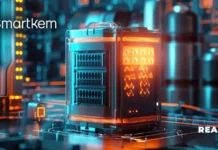Nuvation Energy, a leading provider of battery management systems (BMS), has announced their latest product line expansion with the introduction of a 36-channel cell interface (CI-36) module. Compatible with Nuvation’s existing G5 Battery Management system, the CI-36 allows for denser system designs, leading to more cost-effective energy storage solutions in line with the trend towards 52s and 104s module configurations.
The CI-36 will provide for up to 36 battery cell measurements and 21 external thermistor measurements in a single module. In addition to the new CI-36, Nuvation is also launching a new Cell Interface system optimization program. Under this program, volume customers can work with Nuvation and define reduced battery cell and thermistor measurement active channel counts per CI-36 to achieve even better cost optimizations.
Also Read: Aurora Solar Launches Obstruction Detection
The new cell interface options will continue to work with Nuvation’s existing G5 Stack Switchgear and inherits its highly configurable support for a wide range of battery chemistries, cell manufacturers, and stack topologies. This new solution continues Nuvation’s commitment to addressing utility grid industry security concerns by being designed and developed in the US and Canada and manufactured in Canada. The CI-36 and production optimized units will support the most recent update to the 3rd edition of UL 1973 (UL 1973:2022).
Nuvation Energy will be at RE+ 2024 (Sept 10-12) in Anaheim, California, USA in booth E12070 to talk with customers about this new solution.
“Nuvation Energy is always hard at work advancing our product line to meet the needs of the energy storage industry, and these new solutions make even more cost-effective solutions possible,” said Michael Worry, Nuvation Energy’s CEO/CTO. “The CI-36 allows for increased system density, maintains compatibility with our existing G5 BMS for smooth integration, and will result in a lower system cost.”
SOURCE: PRWeb




